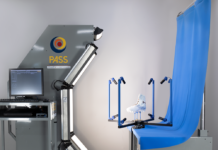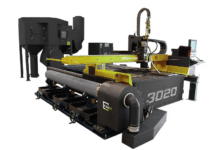In 2018 the number of companies reporting new reshoring and foreign direct investment (FDI) was at the highest level in history, up 38% from 2017. The combined reshoring and related FDI announcements totaled over 145,000 jobs, the second highest annual rate in history. Including upward revisions of 36,000 jobs in prior years, the total number of manufacturing jobs brought to the United States from offshore is over 757,000 since the manufacturing employment low of 2010.
Allowing for a two-year lag from announcement to hire, the cumulative announcements since 2010 have driven 31% of the total increase in U.S. manufacturing jobs during that period and 3.3% of total end-of-2018 manufacturing employment of 12.8 million.
The Reshoring Initiative largely attributes the increases to greater U.S. competitiveness due to corporate tax and regulatory cuts. Similar to the previous few years, FDI continued to exceed reshoring in terms of total jobs added, but reshoring has closed most of the gap since 2015.
The Reshoring Initiative’s 2018 Reshoring Report contains data on U.S. reshoring and FDI by companies that have shifted production or sourcing from offshore to the United States. The report includes cumulative data from 2010 through 2018, as well as projections for 2019. The numbers demonstrate that reshoring and FDI are major contributing factors to the country’s rebounding manufacturing sector.
“We publish this data annually to show companies that their peers are successfully reshoring and that they should reevaluate their sourcing and siting decisions,” said Harry Moser, founder and president of the Reshoring Initiative. “With 5 million manufacturing jobs still offshore, as measured by our $800 billion/year goods trade deficit, there is potential for much more growth. We call on the administration and Congress to enact policy changes to make the United States competitive again. Our Competitiveness Toolkit is available to help quantify the impact of policy alternatives, including a stronger skilled workforce, continued corporate tax and regulatory reductions as well as a lower U.S. dollar.”
A Deeper Dive into the 2018 Reshoring Data
- Reshoring and FDI have driven 31% of the total increase in U.S. manufacturing jobs since 2010 and 3.3% of total U.S. manufacturing employment as of 12/31/18.
- Reshoring from China accounts for 59% of all reshoring.
- Although China topped Germany for the greatest number of FDI jobs announced since 2010, China announced 12% fewer in 2018 than in 2017.
- Quality, freight cost and total cost make up the top offshore drivers of the trend. · Proximity to market, government incentives, supply chain optimization, higher productivity, skilled workforce, and brand image/made in USA serve as the top domestic drivers.
- Reshoring has been increasing at a similar rate as FDI, indicating that U.S. headquartered companies are starting to understand the U.S. production benefit that foreign companies have seen for the last few years.
For further details, read the complete report HERE.
About the Reshoring Initiative
Data for this report comes from the Reshoring Initiative Library of more than 6,000 published articles, privately submitted reshoring case studies and privately documented cases. The report provides data and analysis in 10 different categories, ranging from the number of manufacturing jobs gained, to reasons cited for reshoring, to a breakdown of data by industry, country, region and state. It also includes data on the nearshoring trend (Canada and Mexico).
A 50-year manufacturing industry veteran and retired President of GF AgieCharmilles, Harry Moser founded the Reshoring Initiative to move lost jobs back to the U.S. For his efforts with the Reshoring Initiative, he was named to Industry Week magazine’s Manufacturing Hall of Fame in 2010.





















